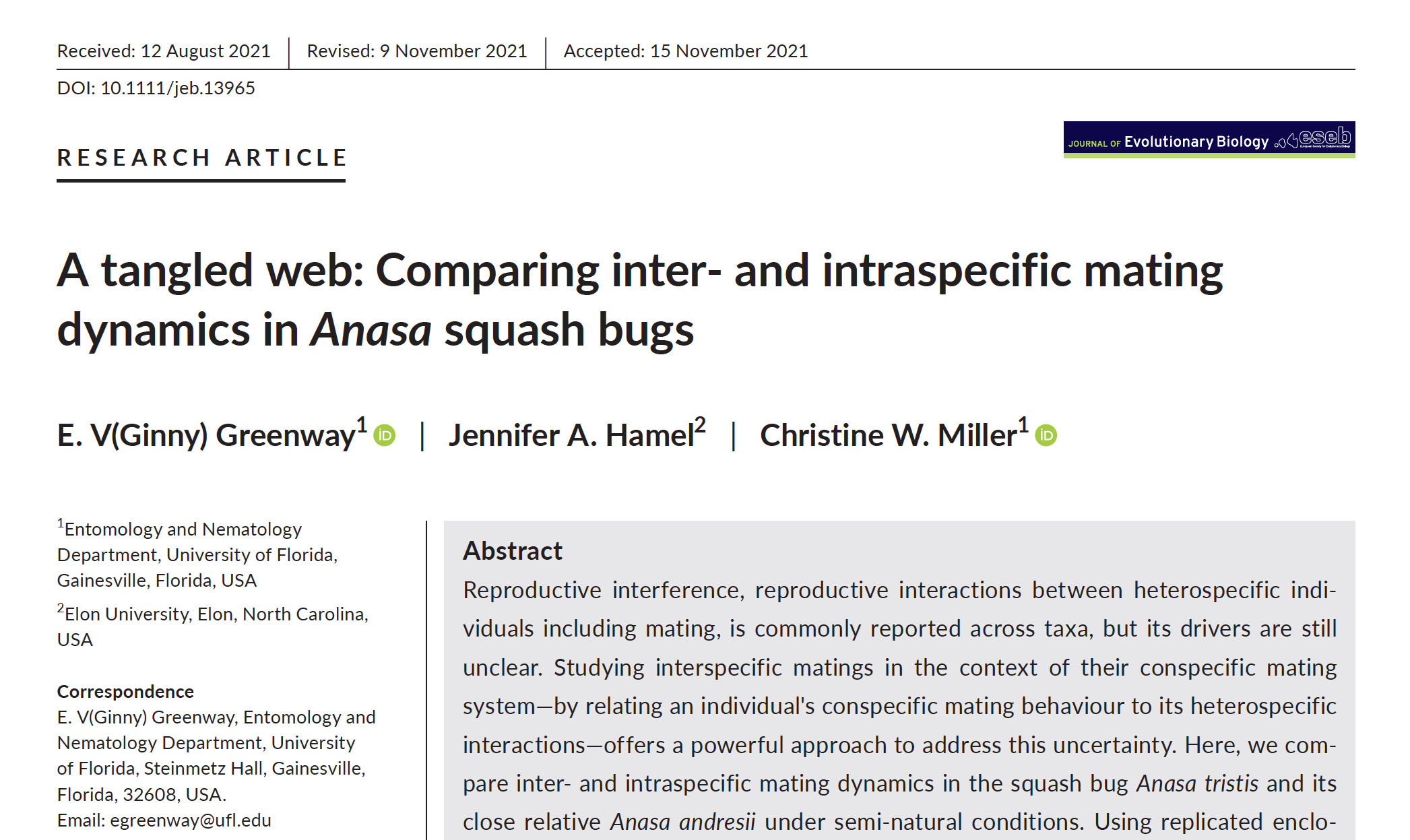Hamel and co-authors from the University of Florida published an empirical study on inter-and intraspecific mating in the current issue of the journal.
Jen Hamel, associate professor in the Department of Biology, has co-authored an article in the current issue of the journal Journal of Evolutionary Biology that examines insect hybridization behavior in a semi-natural context.
The article, “A tangled web: Comparing inter-and intraspecific mating dynamics in Anasa squash bugs,” was co-authored by Hamel, Ginny Greenway (first author) and Christine W. Miller of the University of Florida.
This study reported the results of an experiment that examined how mating between individuals of different species occurs and to what degree it affects the reproductive success or the number of offspring produced by a given male or female. Mating between individuals of different species occurs frequently in nature, and understanding the causes and consequences of such mating behavior is a topic of interest in evolutionary ecology.
Here, the authors examined the mating behavior of two closely-related insect species that have been observed mating with each other in the field. By allowing males and females of both species to interact and mate freely under naturalistic conditions, the authors found that 19% of individuals mated with individuals of the “wrong” different species, but most matings occurred between individuals of the same species.
The authors also measured reproductive success for females of one of the two species. Females who mated with a different-species male produced similar numbers of offspring as those who only mated same-species males. In a previous study, the authors showed that females of this species typically mate with multiple males. It appears that the reproductive costs of occasionally mating with a different-species male are mitigated by also mating with same-species males.
The findings show that in this study system relatively high levels of mating between species likely occurs as a by-product of relaxed pre-copulatory choice by females, a promiscuous mating system and limited reproductive penalties in at least one of the species.
Understanding how mating interactions exert selection on the behavior of insects is a focus of research in Hamel’s research group.
Journal of Evolutionary Biology is a peer-reviewed, international journal owned by the European Society of Evolutionary Biology and covers micro-and macro-evolution, as well as empirical, computational and theoretical work. It prioritizes articles that make significant advances from a broad conceptual and taxonomic perspective.



